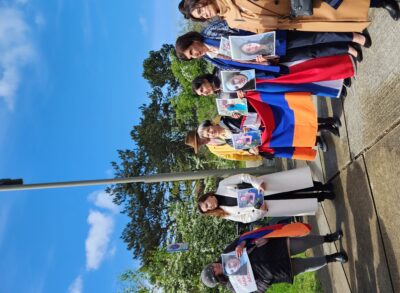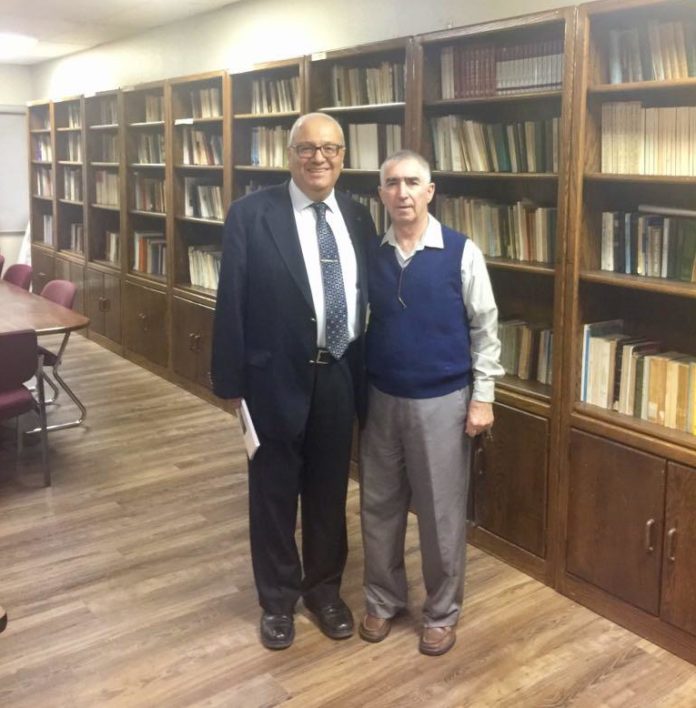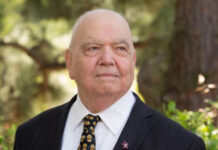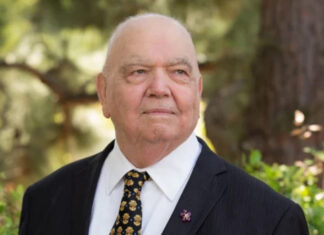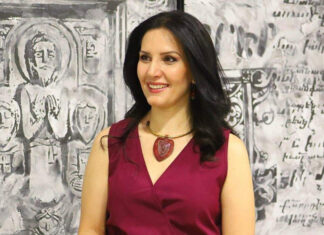By Kevork Keushkerian
ALTADENA, Calif. – Kevork Msrlian presented his book The Armenians of Irbid and Northern Jordan through an Armenian-language PowerPoint lecture at the Tekeyan Cultural Association (TCA) Beshgeturian Center on Sunday, October 1. The event was organized by the TCA Glendale-Pasadena Chapter.
Msrlian first explained why he had researched and documented this historical journey of Armenians, which commenced right after the Armenian Genocide. The author acknowledged and thanked Haigazian University, and in particular the director of its Armenian Diaspora Research Center, Dr. Antranig Dakessian, for encouraging him to further elaborate the research paper he delivered at Haigazian University in May of last year, and publish it in the form of a book.
Msrlian was born in Irbid, Jordan. He received his primary and secondary education at public schools in Irbid. He travelled to Armenia and studied engineering at the National Polytechnic University of Armenia in Yerevan. During his studies in Armenia, he developed a good command of the Armenian language.
For two consecutive years, 1983 and 1984, he was elected Chairman of the Union of Jordanian-Armenian Students in Yerevan. In 2015, Msrlian was elected coordinator of the Jordanian Affiliation of the Pan-Armenian Association of Architects and Engineers. Msrlian has worked in Jordan, Iraq, Yemen and the Sudan with Jordanian and international engineering companies as a contract expert in water and environmental projects.
As Msrlian’s book documents, Armenians came to Irbid in 1915, when they were deported from their homeland of Eastern Turkey. Some of these immigrants returned to their homes when the government of France took over the administration of Syria, Lebanon, and Cilicia. At that time, the population of Irbid was 1,065.
